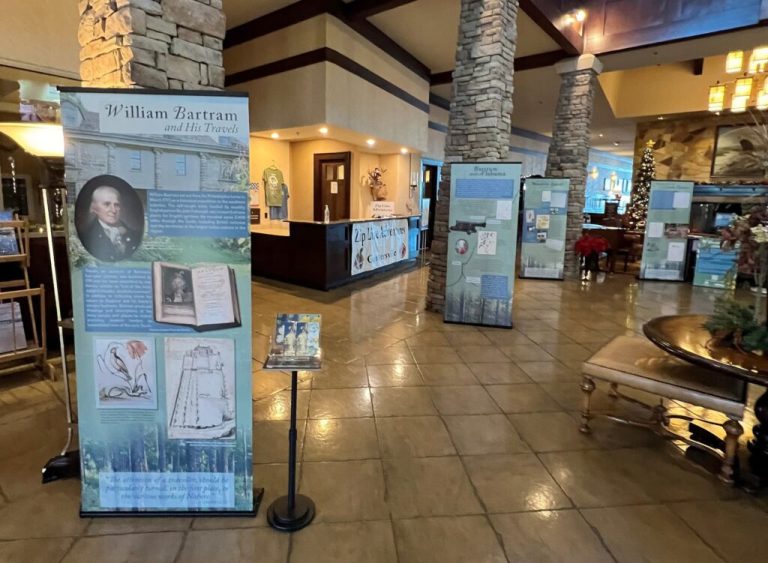Reviewed by: Sharron Swain
19 beautiful fish species that live only in Alabama—find out why [PHOTOS]
Reading time: 7 minutes
Sponsored

As one of the most biodiverse states in the country, Alabama has numerous creatures and plants that are found nowhere else on Planet Earth.
In this series, we’ll take an in-depth look at how and why there are unique-to-Alabama fish, plants and countless other critters.
Join us on that journey. Let’s begin with the 19 fish species you won’t find anywhere else.
Rare fish found by accident


Sixty years ago, near Bessemer, Alabama, one of the rarest fish on earth was discovered by accident.
In 1964, Samford biologist Mike Howell, then a graduate student at the University of Alabama, asked a fellow scientist to look at a tiny darter that had been scooped up and collected along with some salamanders at a spring in West Jefferson County.
Howell quickly got to work, examining the small colorful, two-to-three-inch long fish. He soon learned it was unknown to science—he had discovered a new kind of fish found nowhere else in the world.

After a couple of years of proving to the scientific community that this was indeed a new species of fish, Howell was given the honor of naming it. He called it the Watercress Darter.
Today you’ll find it in only a few Jefferson County springs—in Birmingham’s Roebuck neighborhood and adjacent to Faith Apostolic Church in Powderly in West Jefferson County.
Alabama is “America’s Amazon”

Mobile nature writer and documentarian, Ben Raines, labeled the Mobile Delta and Alabama “America’s Amazon” in a documentary that aired on PBS in 2014. The name stuck.
Legacy Partners in Environmental Education—the statewide environmental education group—published a poster about Alabama’s biodiversity with that title in 2023.

Compared to the rest of the Southeast, Alabama’s freshwater biodiversity is unmatched. We have far more fish, amphibians, crayfish, mussels and snails than our neighboring states.
Number of freshwater animals per state:
- Alabama: 817
- Georgia: 599
- Mississippi: 484
- Tennessee: 674
Why are so many fish endemic to Alabama?

In an interview with The Bama Buzz, Pat O’Neil—a retired biologist with the Geological Survey of Alabama and co-author of the book Fishes of Alabama—answered the question: “Why are there so many fish that live only in Alabama?”
“Aquatic biodiversity in Alabama is the highest of any state in the Southeast. You have to ask yourself, why is that so?
In Alabama, there is a ton of water that flows through the state on an annual basis. Take that water footprint and overlay that on Alabama’s geological footprint, and the result is this wonderful array of aquatic habitats in the state—from the marshes and large rivers in coastal Alabama to the tiny headwater springs in Jefferson County where the Watercress Darter resides.”
Pat O’Neil

For over 100 million years, the part of the state above the Fall Line (the boundary between an upland region and a plain) has escaped large landform changes—from sea-level flooding to ice ages.
This did not occur in our neighboring states.
The fall line in Alabama is a geologic feature that runs in a curve from near Opelika, moves north of Montgomery and winds its way to Northwest Alabama near Tuscumbia.
“That area above the fall line, the upland area, has escaped sea level change and the grinding effects of the ice ages. The fauna and the stream communities that live in those upland areas have been there for millions of years without a lot of change. The climate has been relatively stable through that time. Put all those ingredients in the pot, shake it up, and boom, you get evolution occurring at a pretty high rate.”
Pat O’Neil
Meet the 19 Alabama-only fish

Much like the Watercress Darter, many of the 19 fish that reside only in Alabama have a story to tell.
Here are a few of our favorites.
Pygmy Sculpin

Found only in Calhoun County, the federally-designated threatened Pygmy Sculpin lives in Coldwater Spring. This little sculpin resides where the cities of Anniston and Oxford get their drinking water.
Spring Pygmy Sunfish

Who says rare fish can’t coexist with big developments?
When the new Mazda Toyota plant was located close to Beaverdam Creek, conservationists predicted the demise of the rare sunfish—which is only found near Huntsville and Lauderdale County.
Thanks to everyone working together—the U.S. Fish and Wildlife Service, Mazda Toyota and Tennessee Riverkeeper—the Sunfish habitat was saved and the company set aside millions of dollars to ensure its protection.
Vermilion Darter

Back in the early 2000s, Jefferson County needed a jail.
The spot they had chosen was in Pinson near Turkey Creek, which is the only place the Vermilion Darter can be found.
The community opposed the jail but, instead, proposed the creation of a 500+ acre nature preserve for the fish and the community.
Bought by the Forever Wild Land Trust, today Turkey Creek Nature Preserve welcomes 100,000 visitors annually, and the rare fish is thriving.
Skygazer Shiner

Isn’t “skygazer” the best name for a fish? This critter is found below the fall line on the coastal plain in the Cahaba and Alabama Rivers.
The spunky shiner can also be found in the Tallapoosa River.
Alabama Blind Cavefish

Imagine a fish that lives all its life underground and has no eyes. That’s the life of the Alabama Blind Cavefish.
Only found in Lauderdale County’s Key Cave, the fish is so rare the land around it has been designated a National Wildlife Refuge (NWR).
The other NWR set aside to preserve a fish in Alabama? The Watercress Darter National Wildlife Refuge in Bessemer.
What are the other 14 fish?
- Cahaba Shiner: Cahaba River + Locust Fork
- Silverside Shiner: Alabama River, Tombigbee River
- Warrior Darter: Warrior River
- Locust Fork Darter: Calvert Prong (Locust Fork)
- Bankhead Darter: Sipsey Fork
- Crown Darter: Cypress Creek in Lauderdale County
- Tuskaloosa Darter: Black Warrior
- Watercress Darter: Various Jefferson County springs
- Rush Darter: Birmingham + Sipsey Fork
- Alabama Darter: Alabama River tributaries
- Tuscumbia Darter: Tennessee Valley springs
- Coal Darter: Cahaba, Locust Fork and Hatchet Creek
- Warrior Bass: Black Warrior River Basin
- Cahaba Bass: Cahaba River Basin

Why these fish matter

Besides being gorgeous and cool, why do these fish matter? Dr. Mike Howell, the discoverer of the Watercress Darter and countless other fish living in the springs, streams and rivers, summed it up best.
“Each one of Alabama’s indigenous fish species contributes to our state’s abundance of biodiversity.
Each species harbors a unique gene sequence that has adapted over millions of years to both geological stability (above the Fall Line) and changes in our environmental climate and landscape (mostly below Fall Line).
They have co-evolved with other creatures that are dependent upon them, both predators and prey.
The loss of just one species can seriously affect the ecological balance within our streams and reservoirs.
The loss of too many fish species that form balanced predator and prey interactions can forebode the collapse of an entire interdependent ecosystem.”
Dr. Mike Howell
What’s next

Did you know in the late 1990s scientists discovered a group of plants on a glade in Bibb County that is found nowhere else in the world? In our second “Only in Alabama” piece we are going to learn about our state’s rarest plants.
Join us!
Sponsored by:

 5341 views
5341 views


